Germanopratin Lookbook | Paris Luxury Decor Store
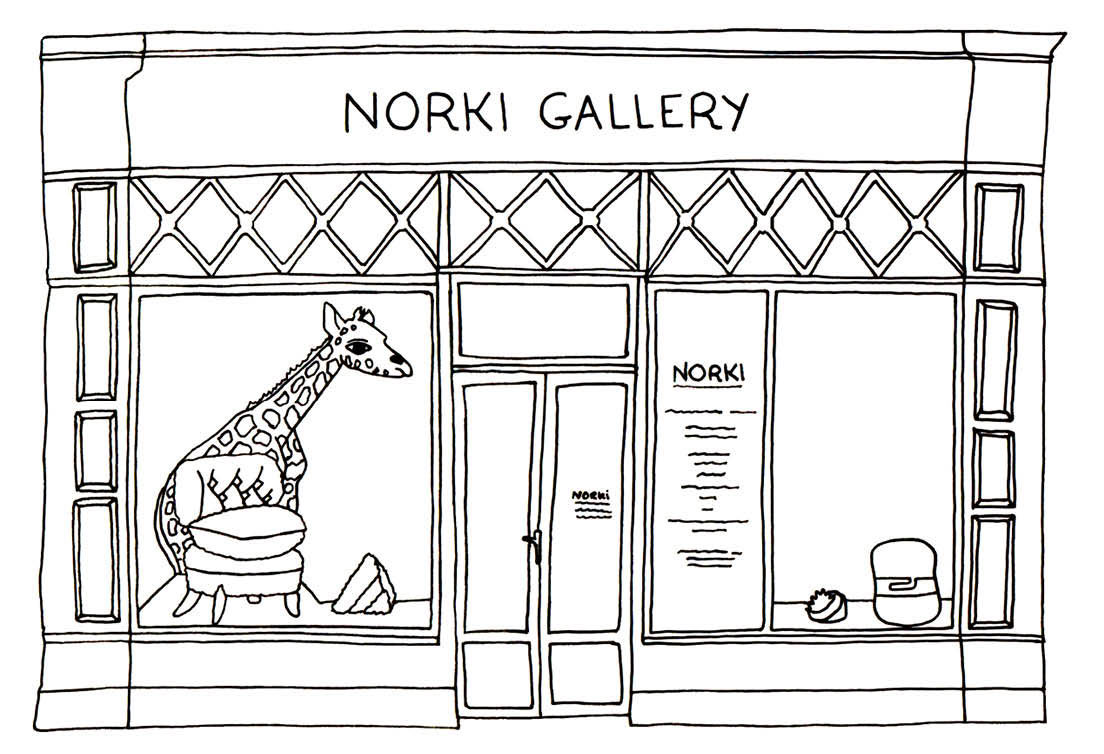
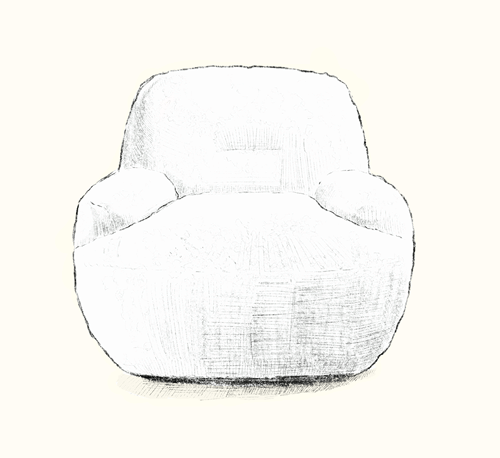

Germanopratin? A lengthy word that immediately evokes cafés, lively discussions, and the bohemian spirit. But where does this term come from?
It finds its roots in the famous intellectual district of Saint-Germain-des-Prés. In the post-war period, this name was given to describe this timeless place – a haven of peace in the heart of Paris, where artists, writers, and intellectuals gather.
The Pont des Arts, which connects the Right Bank and the Left Bank, Rue Bonaparte, home to the École nationale supérieure des Beaux-Arts, Le Bon Marché, Place de Fürstenberg, the Luxembourg Gardens, numerous art galleries, and luxury boutiques—this timeless world, filled with history, attracts a chic and avant-garde population.
The history of Saint-Germain-des-Prés is intimately linked to that of Paris. From the Benedictine abbey founded in the 6th century to the blossoming of literary cafés in the 20th century, this district has traversed eras while preserving its soul.
It was in the 1940s and 1950s that Saint-Germain-des-Prés experienced its golden age. The existentialists, led by Jean-Paul Sartre and Simone de Beauvoir, frequented cafés such as Le Flore or Les Deux Magots. Painters, musicians, and poets mingled with philosophers, creating a unique atmosphere where art and thought intersected.
Today, Saint-Germain-des-Prés remains a cultural hotspot. Art galleries line the streets, bookstores brim with new titles, and cafés retain their old-world charm.
Strolling through the cobbled streets, one can't help but think of all those who have left their mark on this district: Sartre, Camus, Picasso, Hemingway... Their shadows seem to linger, inviting reflection and daydreaming.
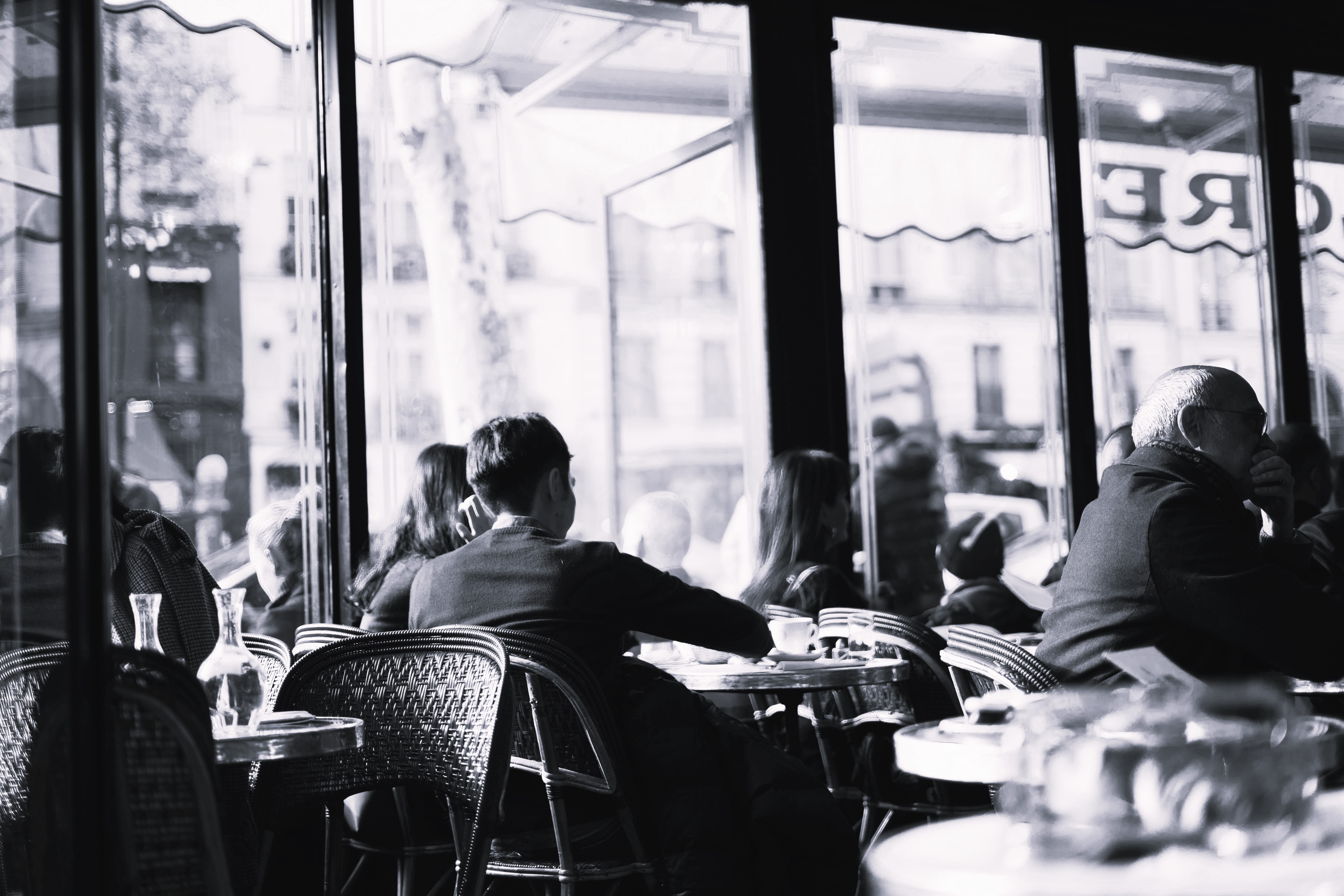
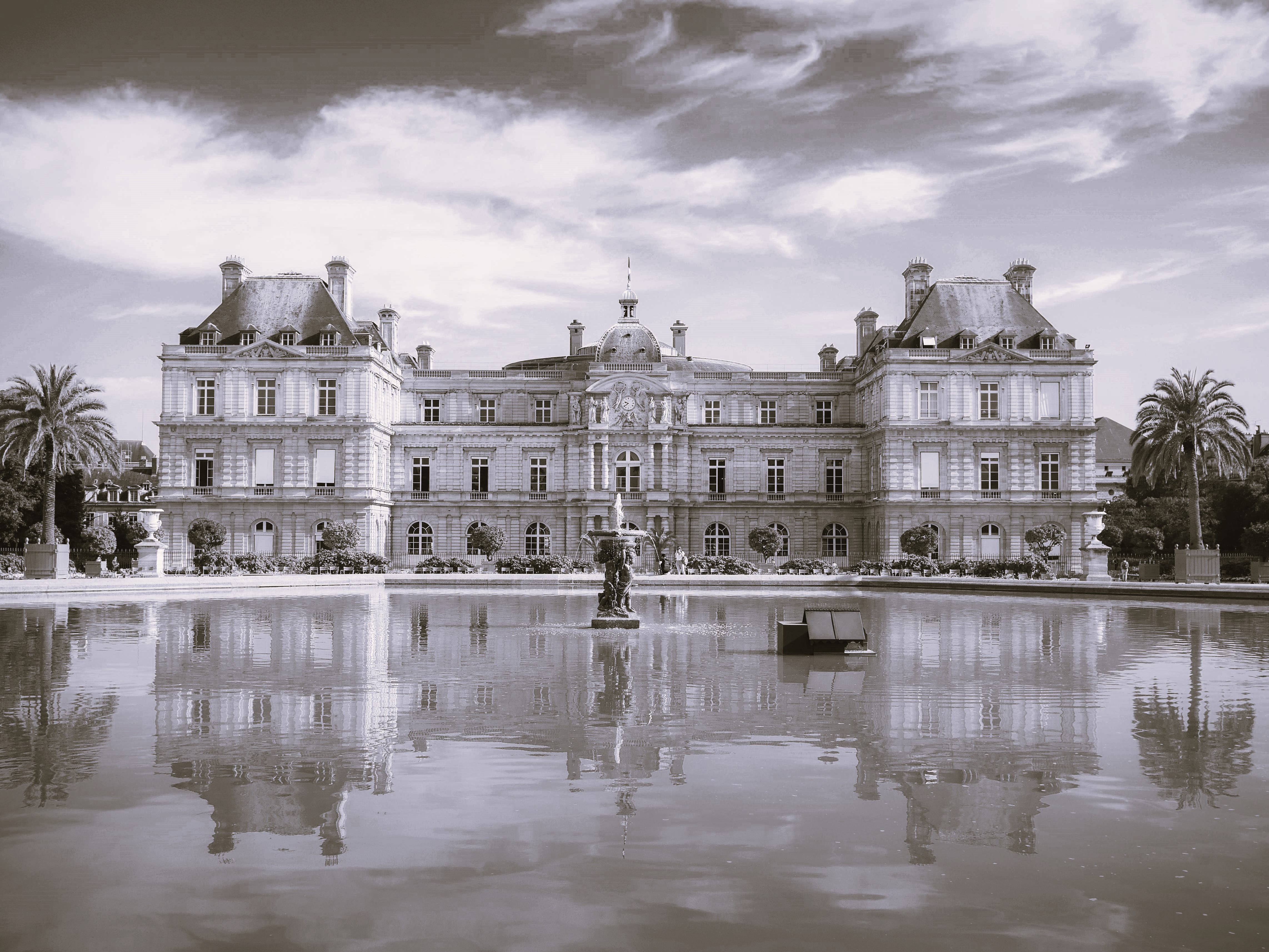
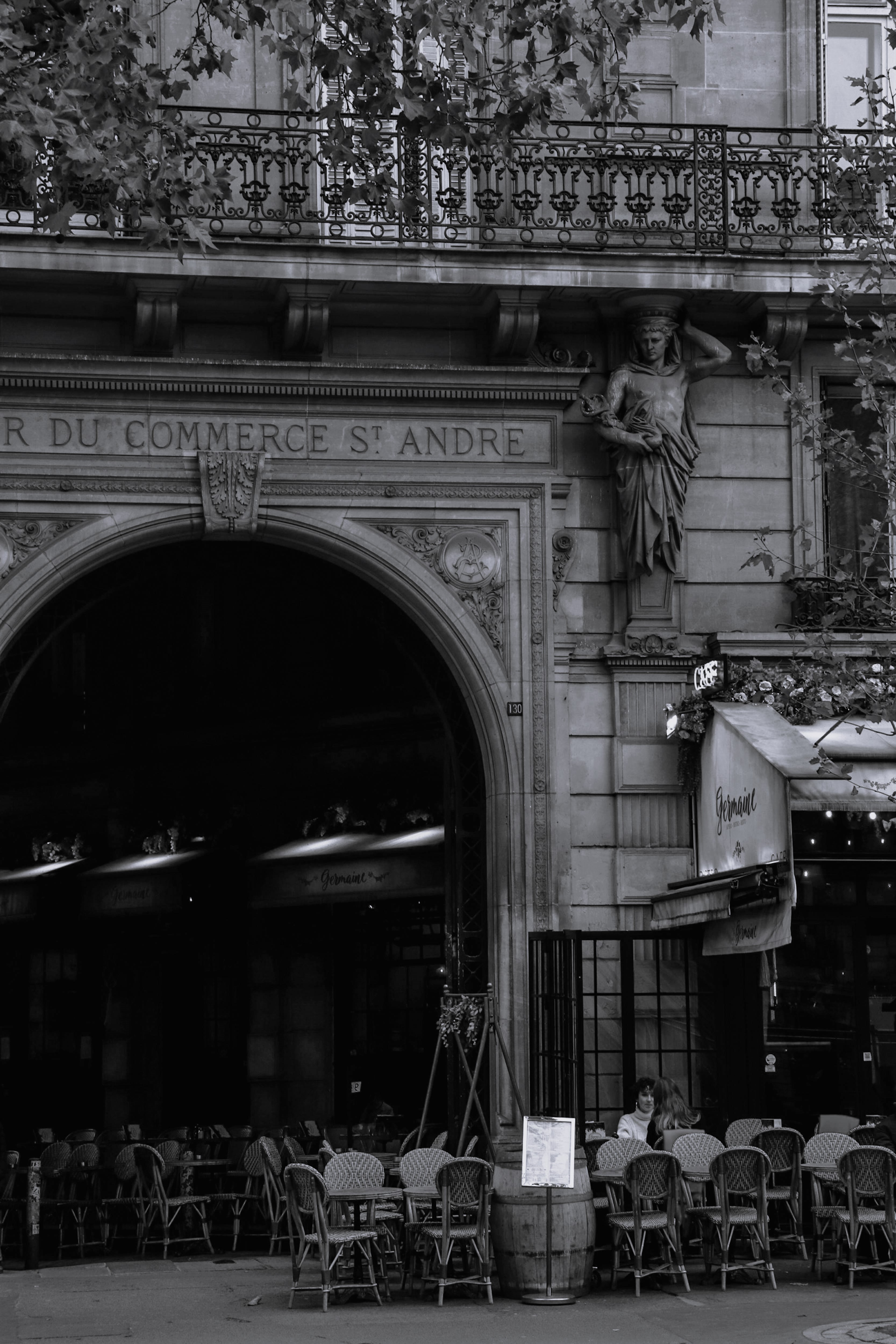
Saint-Germain-des-Prés, the mythical district of the Rive Gauche, has long been the stage for encounters and debates that shaped 20th-century thought. Among the iconic figures who walked its cobblestone streets, Simone de Beauvoir holds a special place.
Women Love to Read...
Pushing open the doors of historic cafés like Café de Flore, we immediately feel transported to a time when intellectuals gathered to exchange ideas. It was in this intimate and stimulating setting that Simone de Beauvoir created some of her most notable works, including the famous "The Second Sex." This book, a true feminist manifesto, disrupted traditional views of women and paved the way for many struggles for equality.
Strolling through the district's streets today, traces of the writer can still be found: Place Simone-de-Beauvoir, named after this free and committed woman, attests to the importance of her legacy. Commemorative plaques scattered throughout the neighbourhood remind us of the places where she lived and worked, inviting us to follow in her footsteps and absorb her spirit.
Beyond being a writer, Simone de Beauvoir was also a passionate woman, deeply involved in the struggles of her time. Her love story with Jean-Paul Sartre, which left an indelible mark on the history of philosophy, also left its mark on the district. The two intellectuals were regulars at the cafés and bookstores of Saint-Germain-des-Prés, where they formed strong bonds with other personalities of their generation.
« Je m’efforçais d’y arriver dès l’ouverture pour occuper la meilleure place, celle où il faisait le plus chaud, à côté du tuyau de poêle » Simone de Beauvoir
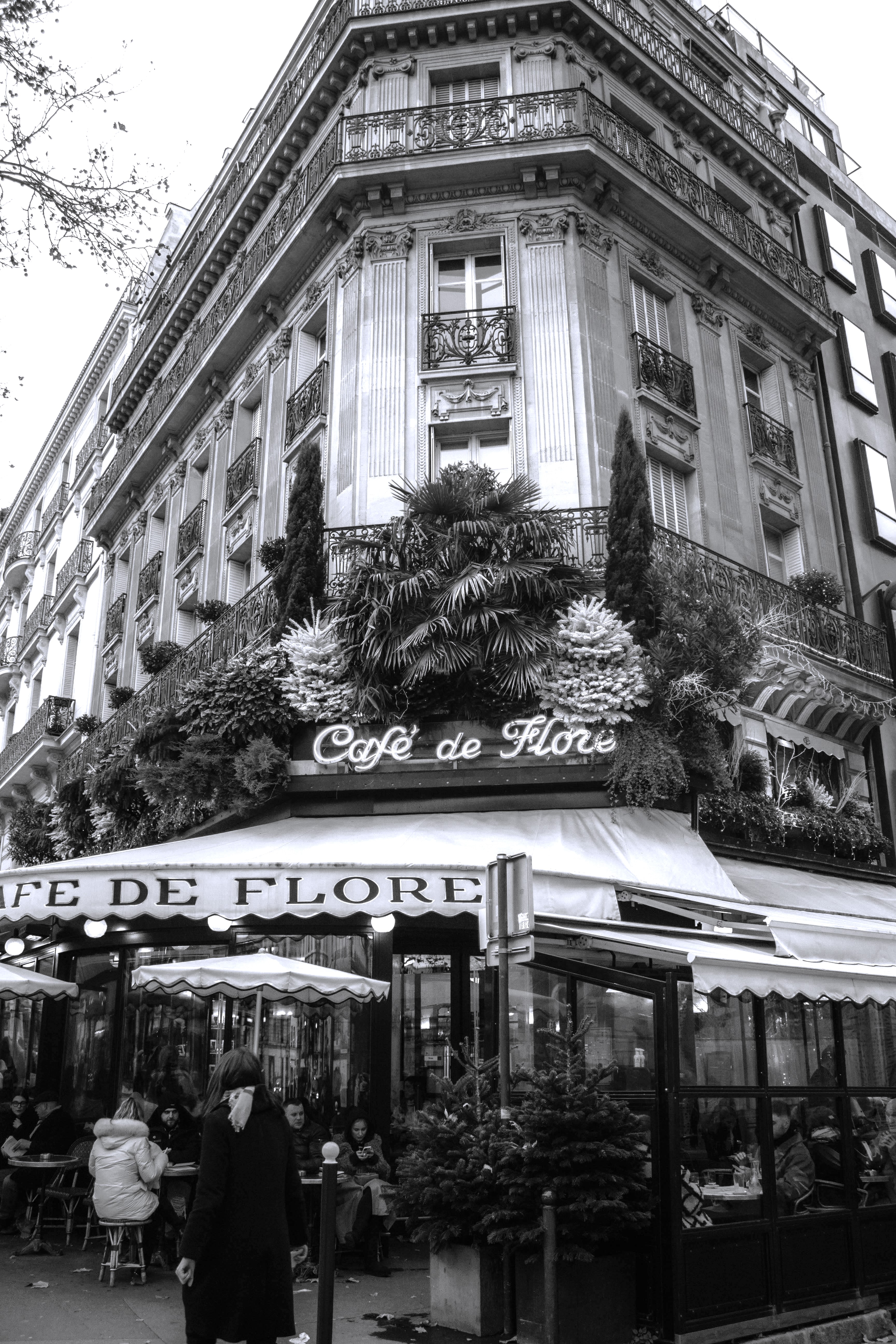
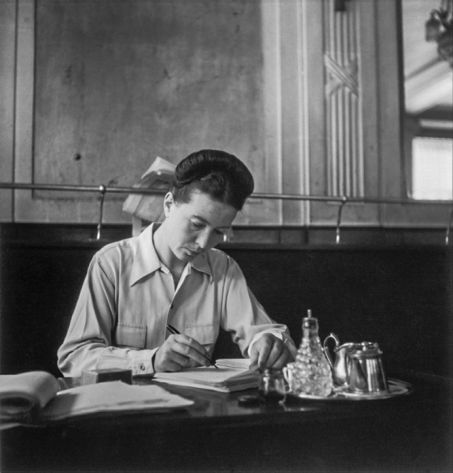
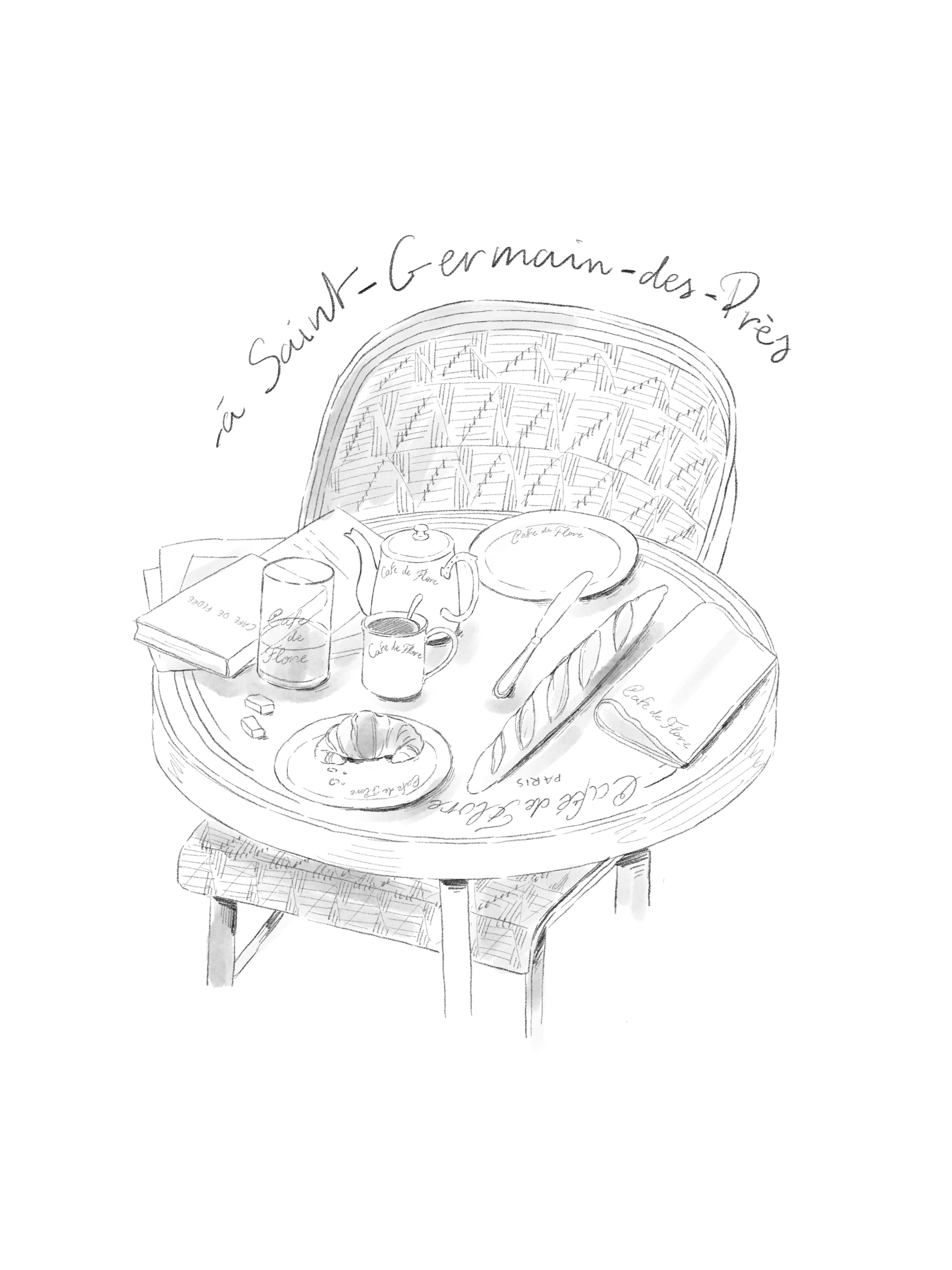
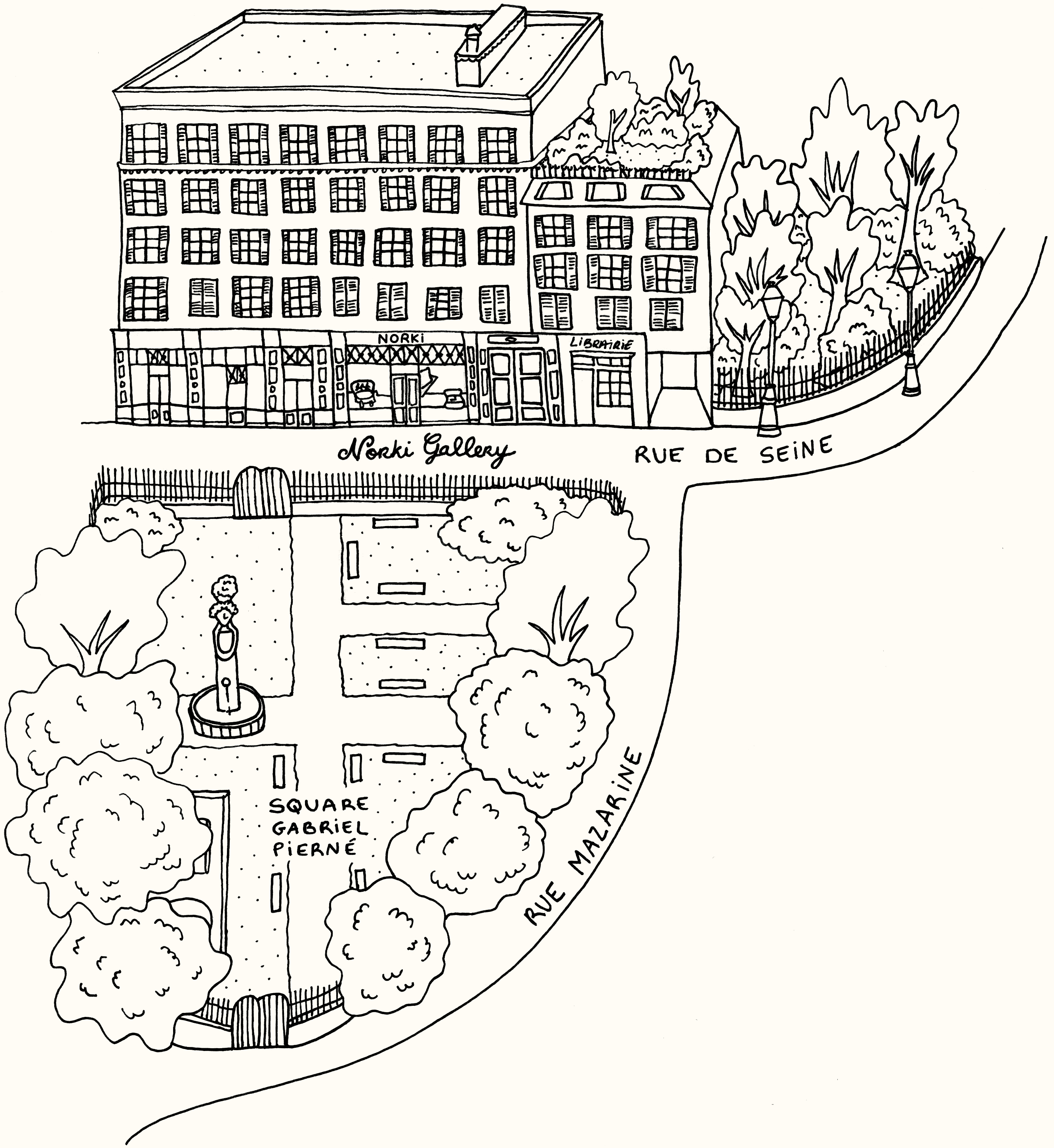
Among the many cultural actors that enliven Saint-Germain-des-Prés is Norki. At the heart of this cultural hub, Norki stands out as a true ambassador of the Germanopratin spirit, perpetuating the tradition of a district where art and life intertwine.
With subtle discretion, well-curated windows, modernity, and design, a deep black wooden storefront contrasts with the white and grey stone of the Haussmannian apartments of Paris at the intersection of Rue de Seine and Rue Mazarine. The window display, adorned with intriguing objects, stands out from its surroundings, and gives an avant-garde impression, much like Maison Norki.
Here, tradition and modernity coexist, forming a wildly sophisticated whole, pushing Norki to go beyond, constantly innovating with passion and ambition. More than just a shop, Norki is a genuine living space where art and creation express themselves at every moment. Clients are invited to discover rugs, throws, cushions, vintage furniture, and decorations signed by the greatest artists of the 20th century, carefully selected. It’s a world where attention to detail and the pursuit of perfection are paramount.
Crossing the threshold of the boutique, one is transported to a world where time seems to stop, where one can take the time to appreciate the beauty of simple things and the elegance of forms.
NORKI GALLERY PARIS
6 rue de seine
75006 PARIS
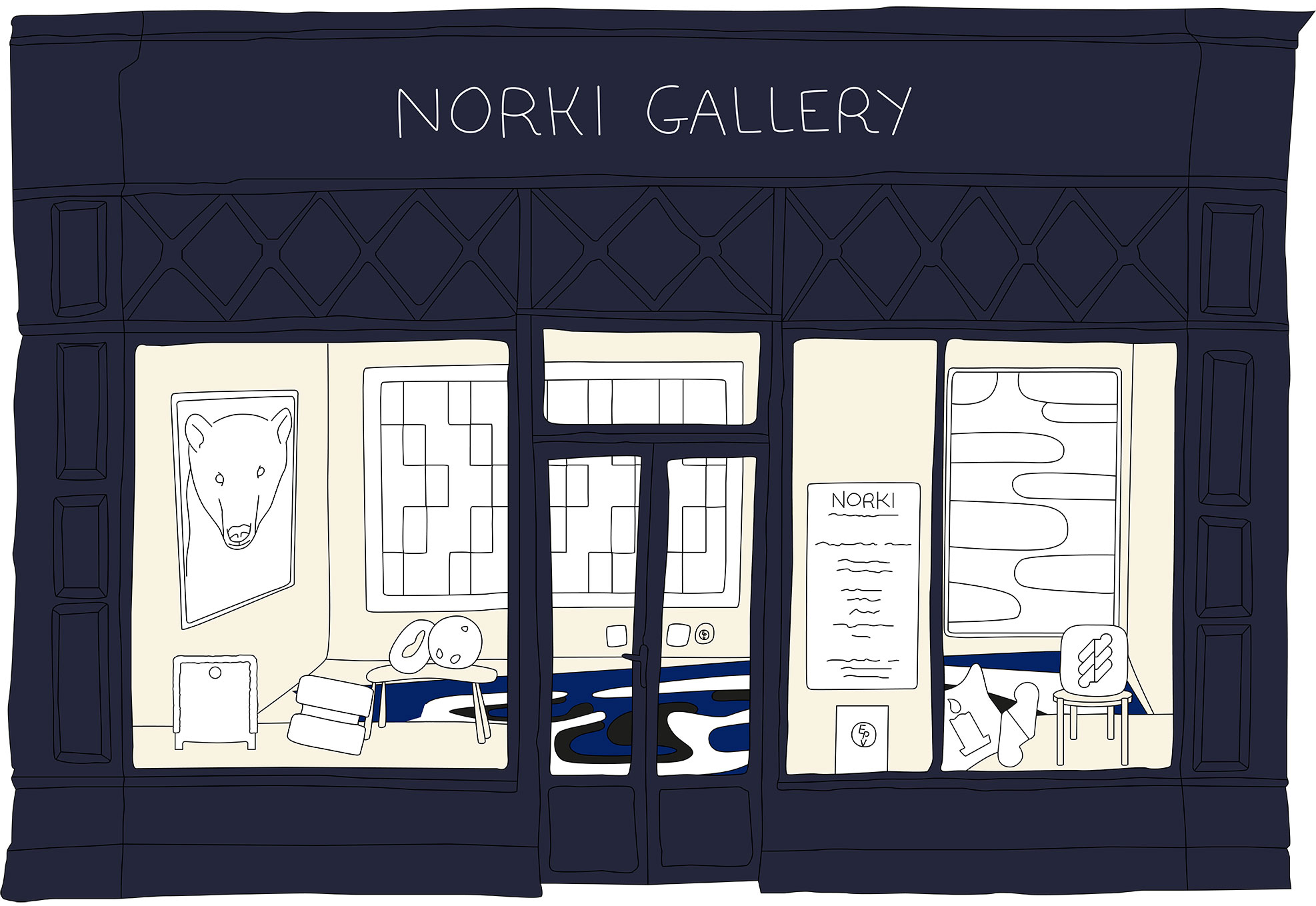
« Paris n'a de bonté que sa légère ivresse de désir et de plaisir. »Paul Verlaine
Saint-Germain-des-Prés is much more than just a Parisian district. It is a place steeped in history, a symbol of artistic creation, and a haven for all those seeking inspiration. Walking through its streets, you will follow in the footsteps of the greats and soak up the unique atmosphere that makes Saint-Germain-des-Prés an essential destination for art and culture lovers.